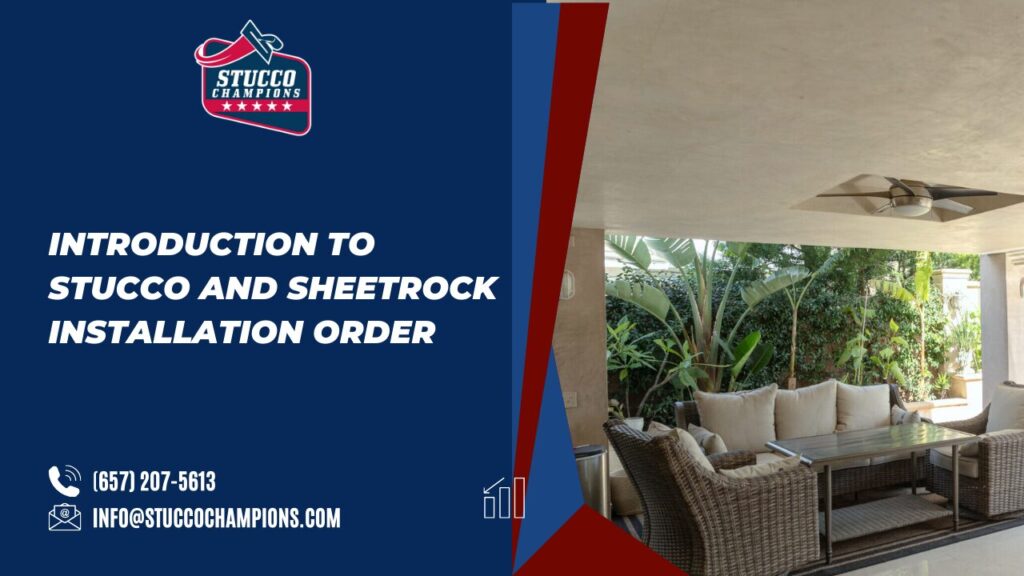In the realm of construction, the sequence of installing various materials is crucial. A common query among homeowners and builders is whether stucco can be applied before sheetrock. This article aims to provide a comprehensive understanding of the process, delving into the typical practices, potential drawbacks, and optimal order for stucco and sheetrock installation.
The Feasibility of Stucco Before Sheetrock
It is indeed possible to install sheetrock after stucco, although this is not the standard practice. The key to a successful installation in this sequence is to minimize the impact on the stucco. This can be achieved by predominantly using screws for sheetrock installation, as excessive nailing can induce vibrations that potentially lead to stucco cracking.
Understanding the Standard Procedure
Typically, sheetrock is installed after the stucco lath (the foundational layer for stucco) but before the stucco base coats. This sequence is preferred to mitigate potential damage to the sheetrock during the stucco application. Sheetrock is often hung using nails due to ease and speed, although some contractors opt for screws or a combination of both. The choice of fastening method can significantly influence the structural integrity and the potential for damage to the stucco.
The Impact of Fastening Methods on Stucco
When nails are used for hanging drywall, the vibrations caused during installation can affect already applied stucco. This is a crucial consideration for those opting to stucco before sheetrock. To minimize such risks, it’s recommended to use screws, which cause less vibration and are less likely to induce cracking in the stucco.
Ideal Installation Order and Practices
In optimal circumstances, the stucco lath is applied first, followed by sheetrock installation. This sequence prevents water intrusion and damage to interior materials. After securing the sheetrock, the stucco application resumes with all coats applied to completion. Concurrently, drywall can be taped and textured, allowing for simultaneous progress without delays.
Addressing Moisture Protection Concerns
When installing sheetrock after stucco, additional measures for moisture protection are essential. This includes proper sealing and the use of moisture-resistant drywall, especially in areas prone to high humidity or direct water exposure. Ignoring these precautions can lead to moisture-related damages, compromising the structural integrity of the walls.
Potential Drawbacks and Solutions
While it’s feasible to install sheetrock after stucco, there are potential drawbacks such as cracking and the need for enhanced moisture protection. To minimize cracking, the use of screws instead of nails, careful scheduling to reduce vibration impact, and employing skilled contractors are crucial. For moisture protection, using appropriate drywall types and ensuring proper sealing are key.
Enhancing Reader Value Through Specific Advice
To further assist readers, it’s beneficial to offer specific advice on minimizing risks associated with non-standard installation orders. This includes recommendations on the type of screws to use, techniques for reducing vibration impacts, and guidelines for moisture protection.
In conclusion, while sheetrock can be installed after stucco if circumstances necessitate, understanding and mitigating the potential issues is vital. Adhering to best practices, such as proper fastening methods and moisture protection, ensures the longevity and integrity of the construction. This article aims to provide a detailed understanding of the processes, helping readers make informed decisions in their construction projects.
Last week, we shared Can You Stucco Over Tyvek? explaining whether Tyvek can serve as an adequate substrate for stucco and the steps to ensure proper application. If you’re planning a stucco project and want to learn about the compatibility of materials, be sure to check out the post!
—
Ready to Work With a Trusted Stucco Contractor in Los Angeles? Contact Stucco Champions today for a free consultation! Visit us at Stucco Champions for valuable resources and to learn more about our expert stucco repair service.

